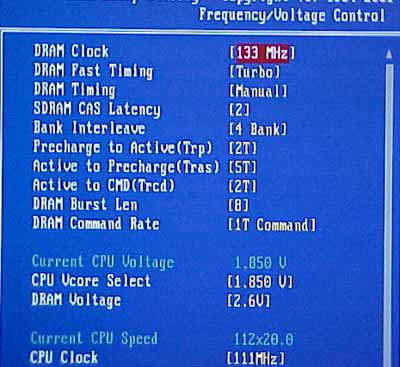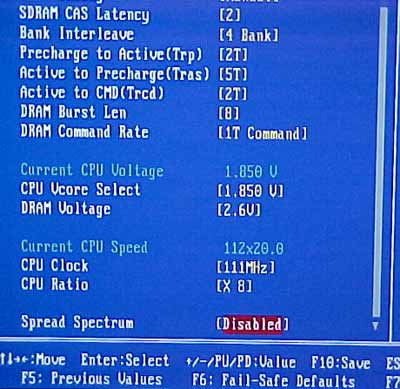The BIOS used with the VIA P4PA is an Award BIOS,
and it looks as though VIA have been trying hard to target some of
enthusiast market. In addition to all the wonderful things a BIOS should do, there are also quite a
few memory tweaks and overclocking options to keep insomniac tweakers busy till the early
hours of the morning. It's nice to see that VIA allows the
user to take a lot of control over their own system.

The memory tweaks
and overclocking options are all bunched up together on one screen which is not
a bad idea since if a tweaker pushes their system too far, it's most likely
these settings which will need to be reset.
As far as the memory
tweaks go, you can adjust the memory speed to run +33 MHz if you have PC2100 DDR
RAM. CAS latency can be manually selected and I like the fact that 4-Way bank
interleaving can be forced. As for voltages, the CPU VCore can be adjusted from
1.1-1.85V and the DDR voltage can be moved from 2.5-2.8V.
Since Northwood
Pentium 4's don't seem to have a hard time reaching those high FSB's, DDR RAM
voltage controls was a pretty good idea.

The FSB for 400 MHz based Pentium 4's can be increased
1 MHz at a time between 100-132 MHz. With the newer 533 MHz based Pentium
4's coming out very soon you should note that the FSB does go higher, but since we don't
have one though, we're not sure what the limit of the board is. If you're lucky
enough to have a engineering sample Pentium 4 there are also multiplier
controls. However for the rest of us this is pretty much useless.
Overclocking:
As for overclocking, the VIA P4PA was surprisingly good even
with just a Williamette Pentium 4 2.0 GHz.
Using that chip we were able to push the CPU up to 2.25 GHz, which
is up from the usual 2.2 GHz we've been able to reach with almost every other m478 mainboard! While
50 MHz doesn't sound like a big deal, it is still 50
MHz higher than any other socket 478 board has been able to reach.

